From the Field
March 30:
Steve Howell sends another update from San Blas, Mexico.
After 18 days in San Blas, Mexico (our regular tour is only 9 days!), Steve Howell reluctantly dragged himself away. The highlight of his stay was a small group of White-fronted Swifts one morning, a species described only in 1992 (!) and seen in life only a handful of times ever!
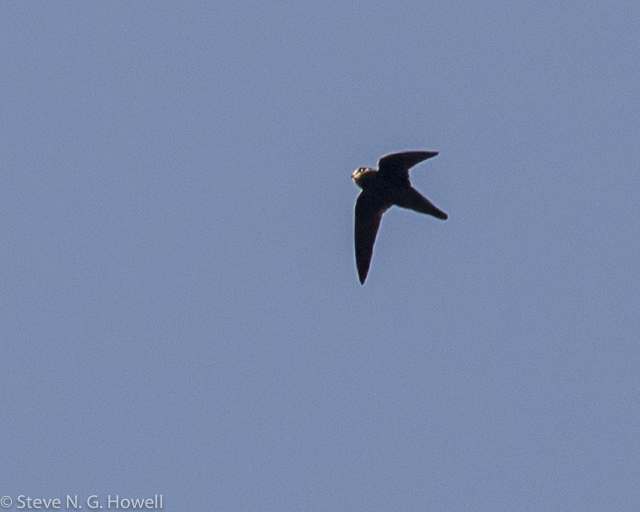
For the non-swift aficionados, there was plenty of color, including this Golden Vireo...
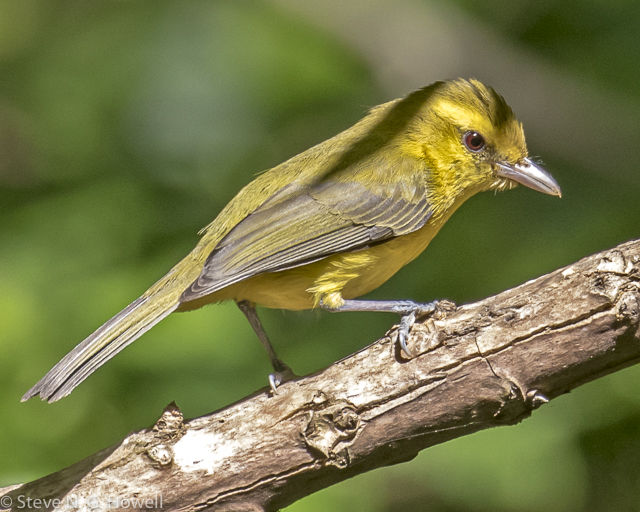
Groups of sociable Mexican Parrotlets...
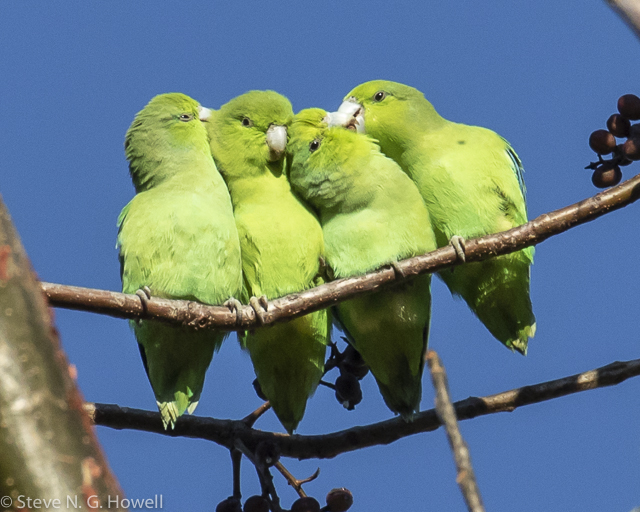
And lots of Lineated Woodpeckers.
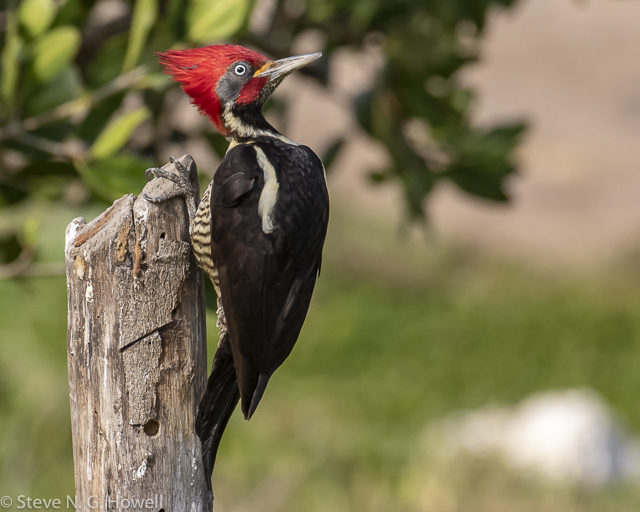
Elusive species included a confiding Lesser Ground-Cuckoo
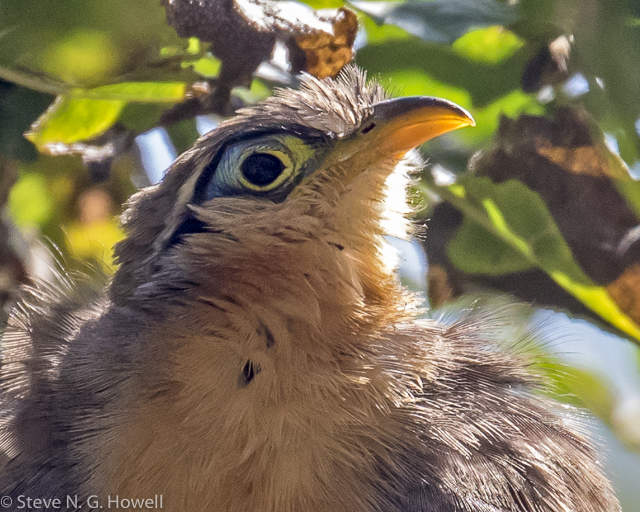
And, after 40 minutes of patient sitting, a stunning Spotted Rail finally peeked out.
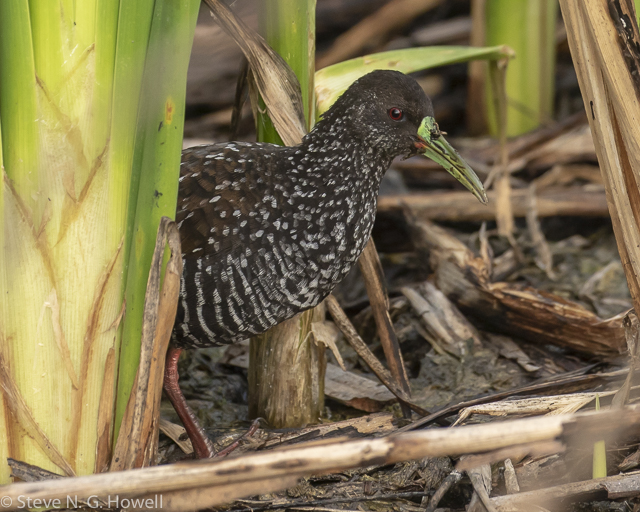
One of the San Blas signature birds, Boat-billed Heron, showed well (even if it tried not to!)...
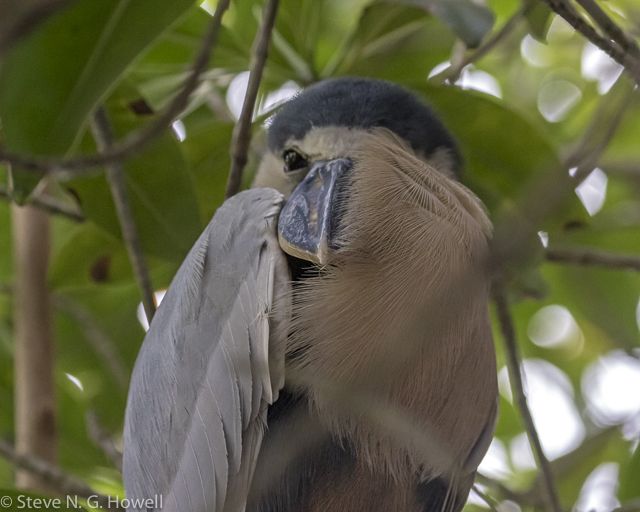
And a remarkable record count of 39 Northern Potoos may have been due to dry season conditions concentrating birds along the river.
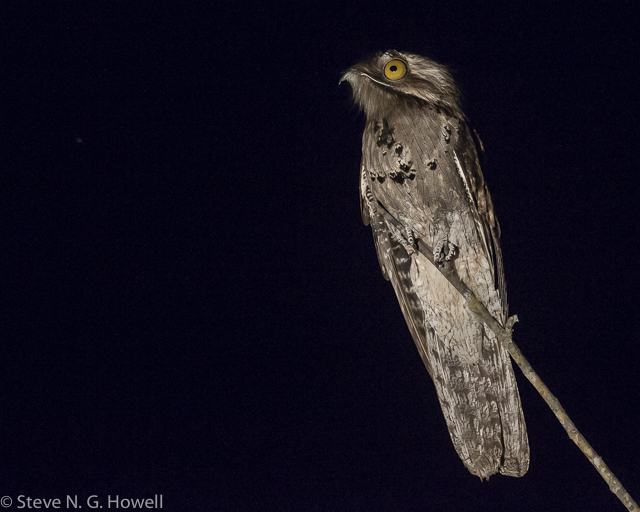
Speaking of records, along with Luke Seitz and Maili Waters (down in Mexico on a three-month trip), Steve helped set a new Big Day record for Mexico—290 species on 27 March, including Eared Poorwill (number 286)…
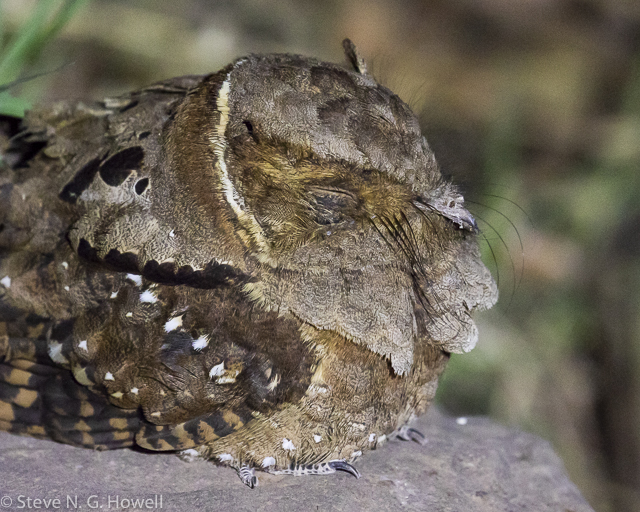
And a stunning fly-over Laughing Falcon…
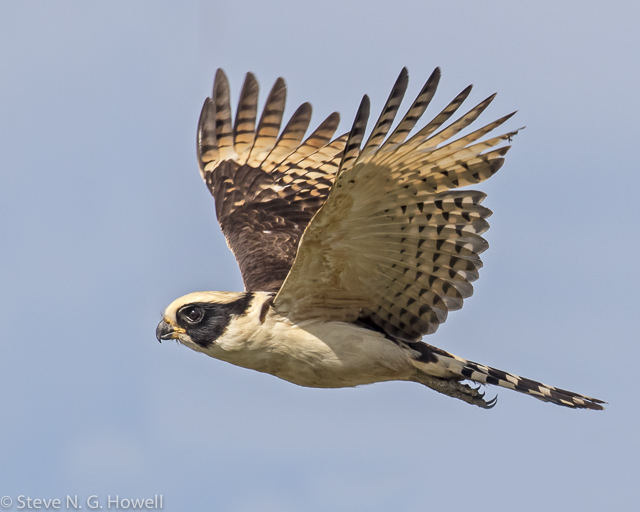
But not including Surfbird, which had been a regular migrant in preceding days—the joy and unpredictability of birding!
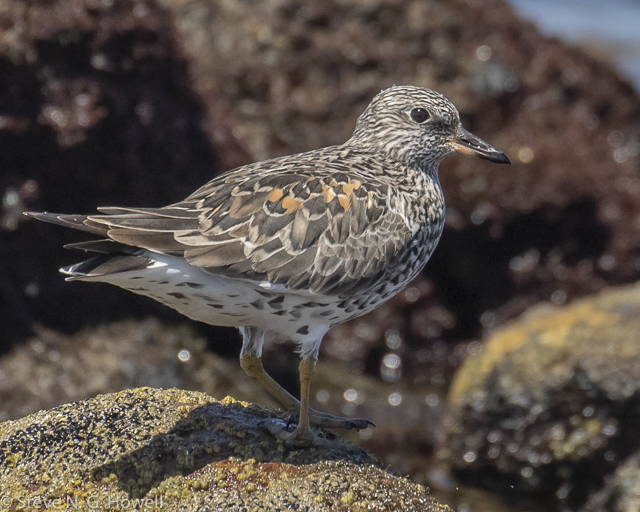
March 18:
Steve Howell is back on home turf - Mexico!
- Steve Howell reports in from the field (not the home!) on his spring break to San Blas, just to check that there are still birds in Mexico—and there are! This Streak-backed Oriole was one of 95 species in an unhurried three-hour morning walk near the hotel.
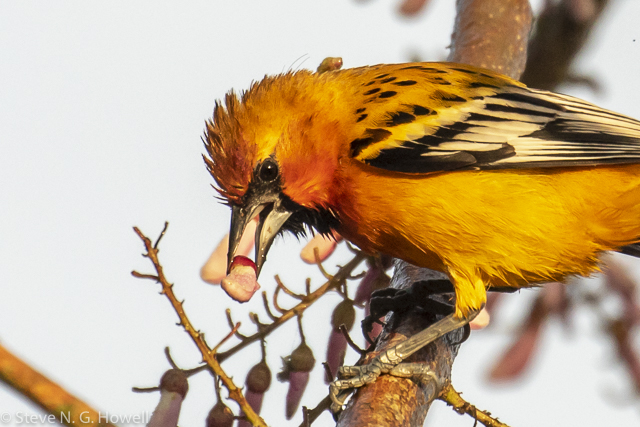
- Rufous-bellied Chachalacas have become much easier to see here in recent years, and tamer. Four walked past my room at the hotel yesterday afternoon and fed on fruit over one of the cabins while people splashed in the pool nearby!
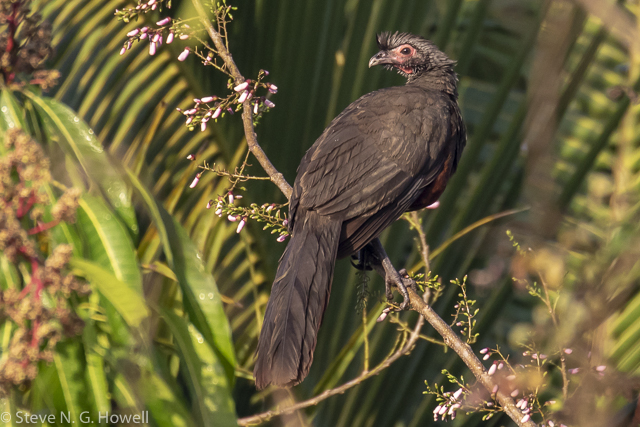
- Black-throated Magpie-Jay is too large to fit in the frame, so here’s just the head.
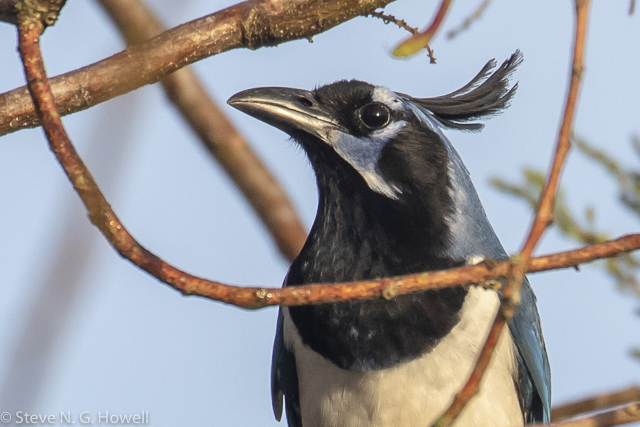
- A pair of White-fronted Parrots dropped in and landed briefly, just long enough for one camera snap.
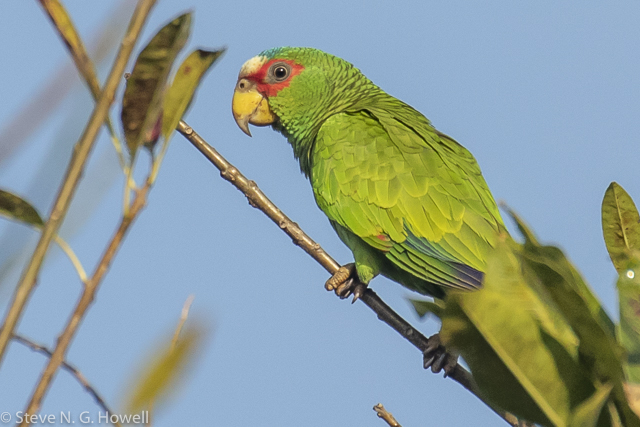
- Russet-crowned Motmots are calling a lot more than in winter, and much easier to see!
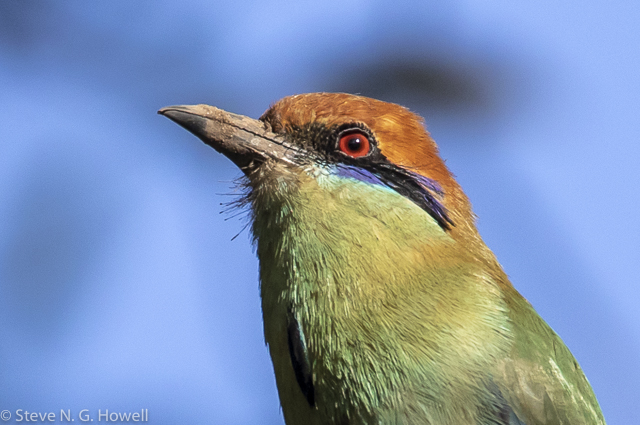
- In contrast to the colorful birds, this Northern Beardless Tyrannulet was pelting out his song from the tree next to the motmot!
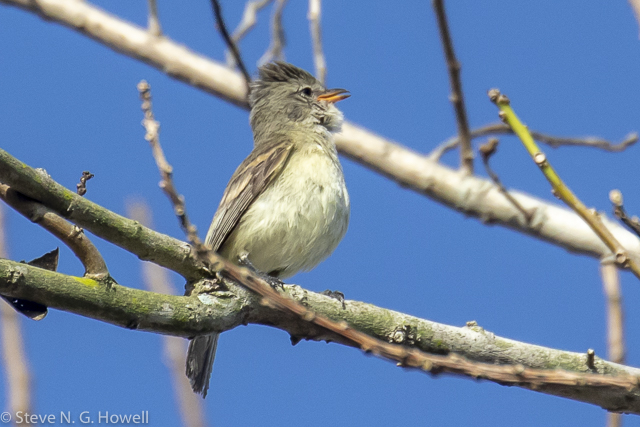
- Lots of weed-eating flocks included some cracking male Varied Buntings.
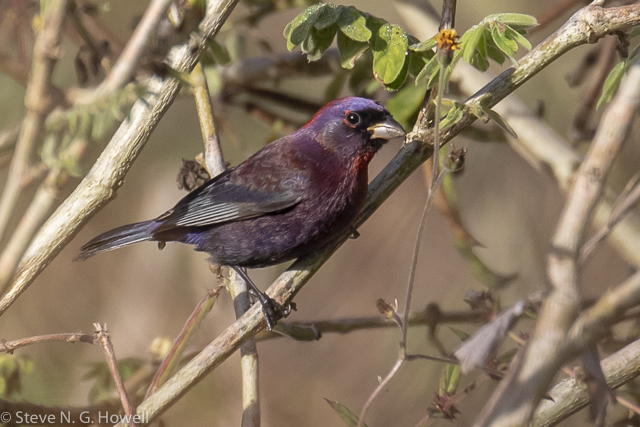
- And plenty of raptors included this Northern Crested Caracara—and that’s just a summary of 3 hours. Now time to relax, shrimp burger lunch, and back out after a siesta. It will be great when we can start running tours here again!
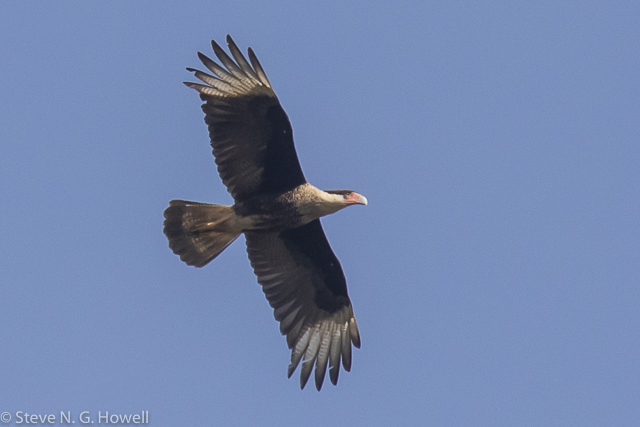
- Lunch of shrimp burgers and fresh-squeezed limonadas, with an “Australian vagrant” – our Australasian expert leader Susan Myers has joined me to escape the northern winter, her first time in Mexico!
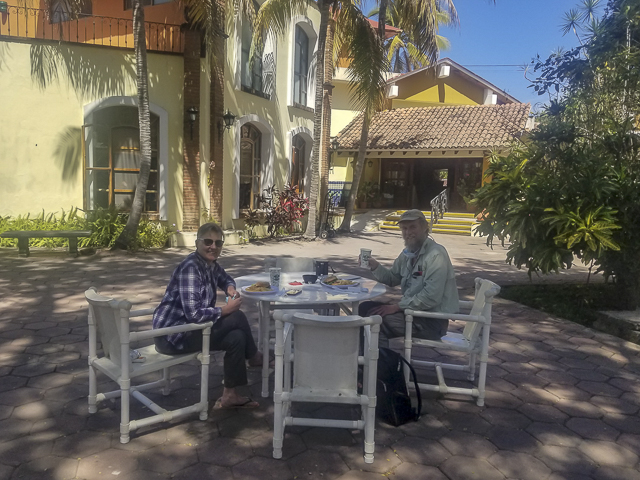
January 14:
Susan Myers shares some amaing images from her time at Bosque del Apache in New Mexico
If you’re a WINGS leader the birding never stops! There isn’t a single day where I’m not birding in one way or another. I won’t lie-I’ve been missing so many aspects of my leading life, not least showing our guests the amazing birds and placeswhereI lead, as well as my friends(human and avian) in Asia and Australia. But I’m making the most of my time here and really getting to know the birds of America. Last December I enjoyed a very special week in New Mexico as guests of my good friends Liz and Maurice Southworth. Our aim was to photograph the Sandhill Cranes at the legendary Bosque del Apache reserve south of Albuquerque. While isolating in our bubble (of course), we visited the reserve daily. Unfortunately for everyone, cranes included, New Mexico has been experiencing a drought for the last couple of years so the usual photography point where one can get close to these beautiful birds was as dry as a chip. So, no joy there, photography wise... Nevertheless, there were still thousands of cranes, as well as Snow Geese, Ross’s Geese, Northern Pintails, and others. What an incredible sight as the cranes daily flew in and out of their feeding and roosting sites. And the soundscape was also remarkable. Anyone who has experienced cranes en masse must surely count their honking as one of their favourite sounds. It reminded me very much of my winter tours to Japan where we visit Arasaki in the south to see the massive congregations of White-naped and Hooded Cranes. In fact, we see Sandhill Cranes there every year, too. But only three or four of them. This was something else!So here are some images I managed to capture of these most iconic of birds. I hope you enjoy them. By the way, if you’d like to see some more, I’m on Instagram @wildwomanphotos. And thanks again Liz and Maurice...
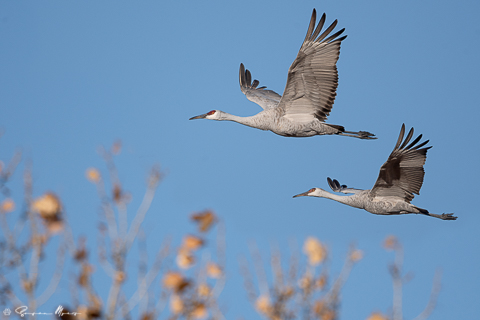
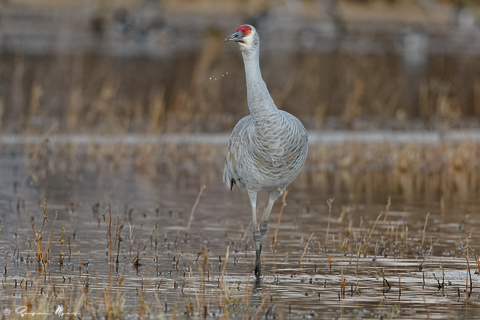
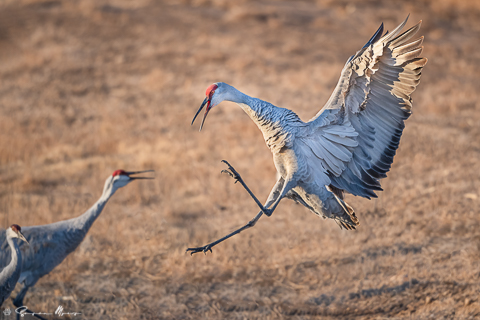
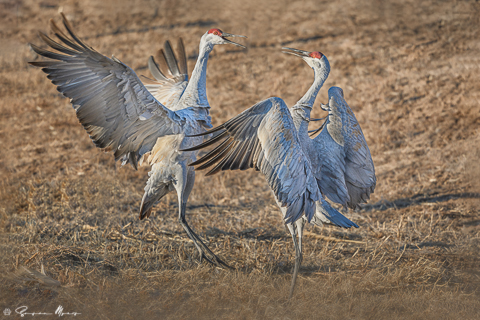
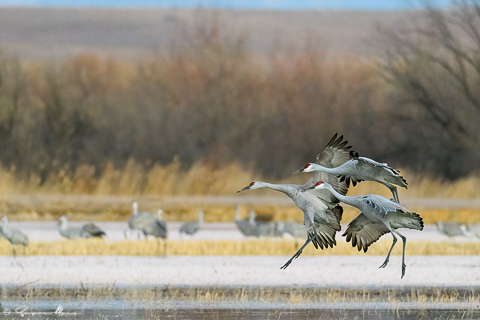
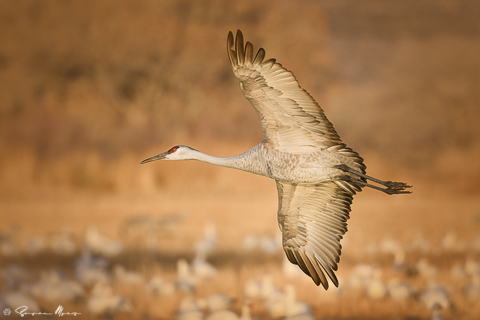
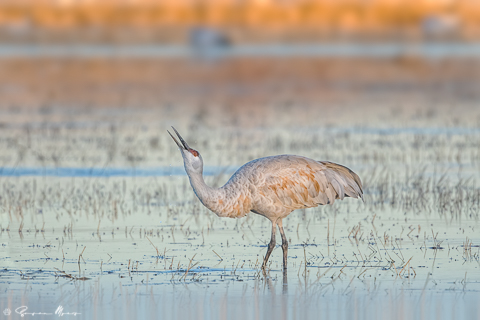
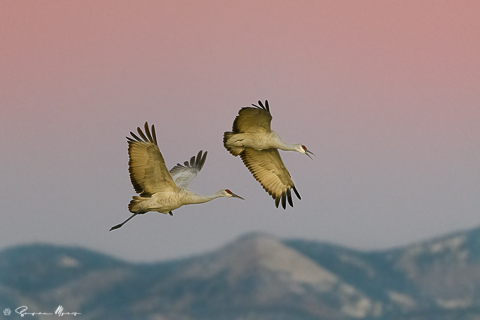
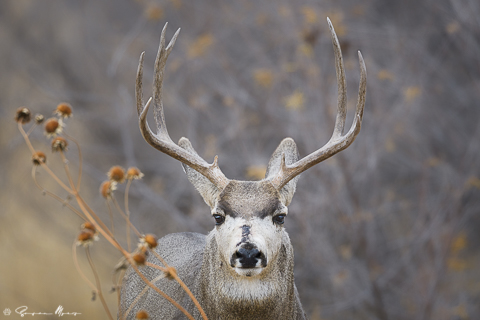
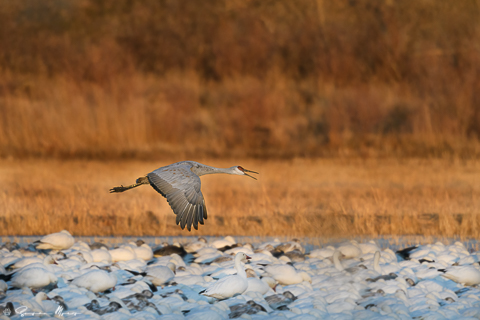
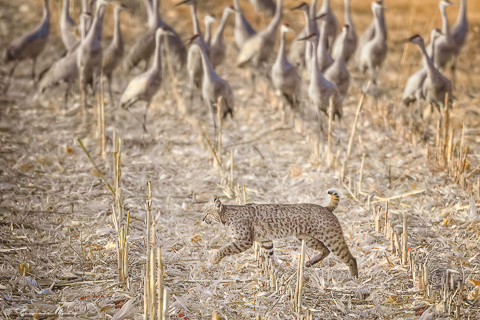
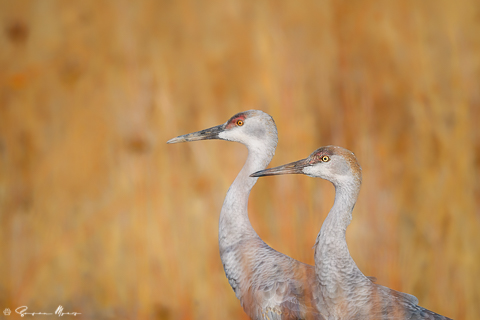
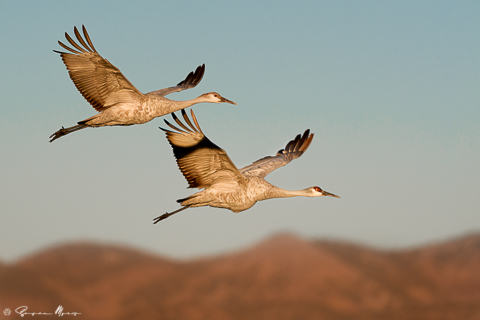
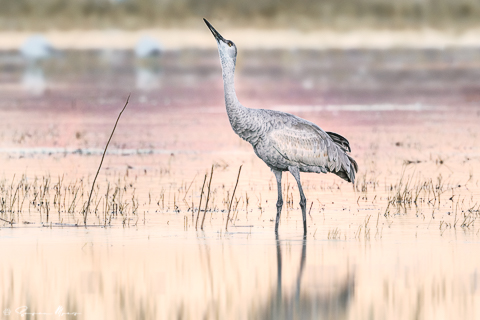
January 11:
Steve Howell finishes up his 2020 Bigfoot Year
Steve Howell concludes the saga of his COVID-enforced 2020 Bigfoot Year in his California home town (see previous FTH posts) with a summary of December, one of the highlights of which was this Christmas dawn, accurately foretelling some much needed rain.
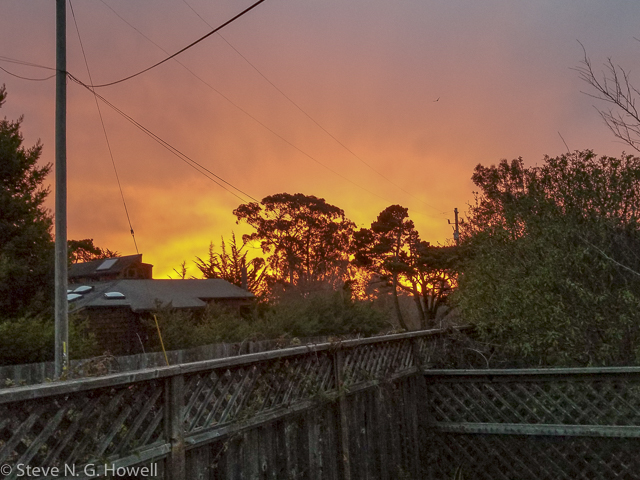
As any birder knows, diminishing returns is a rule of birding, and after many, many days afield in town I didn’t find a single new species in December for my Bigfoot Year. But it’s always nice to watch the regular local birds, including this dark Merlin in the neighborhood.
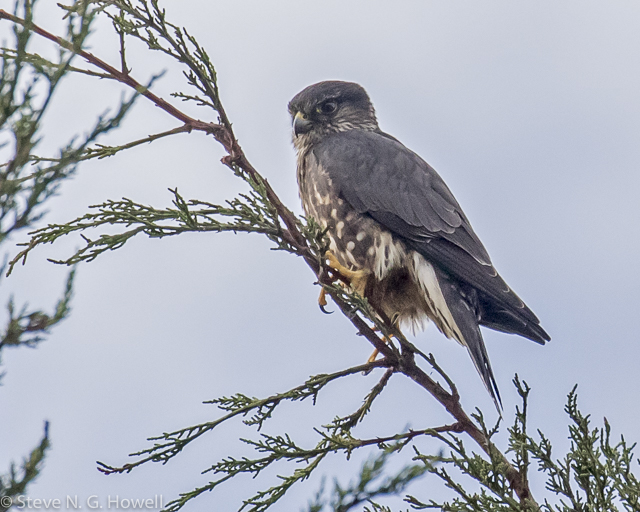
And the wintering young Ferruginous Hawk, which finally flew over my yard.
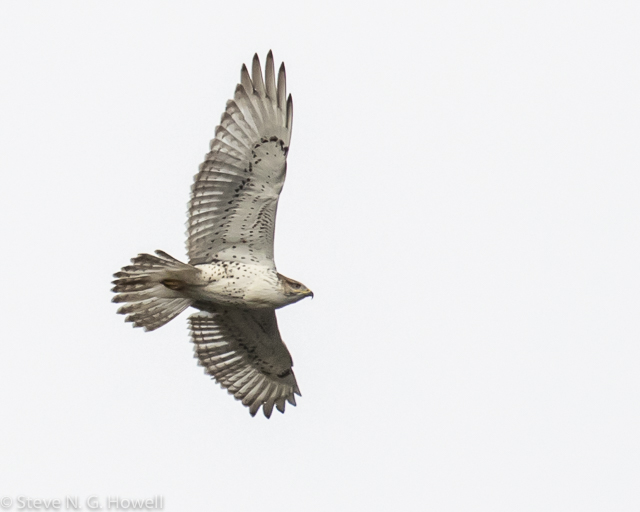
Bird of the year in town, however, was found by a friend on December 7th, and I was called in to help with the ID. Common Poorwill is the only “likely” nightjar here at any season, but this bird was mooted as perhaps a whip-poor-will. Imagine my surprise on seeing it—what the Chuck?!
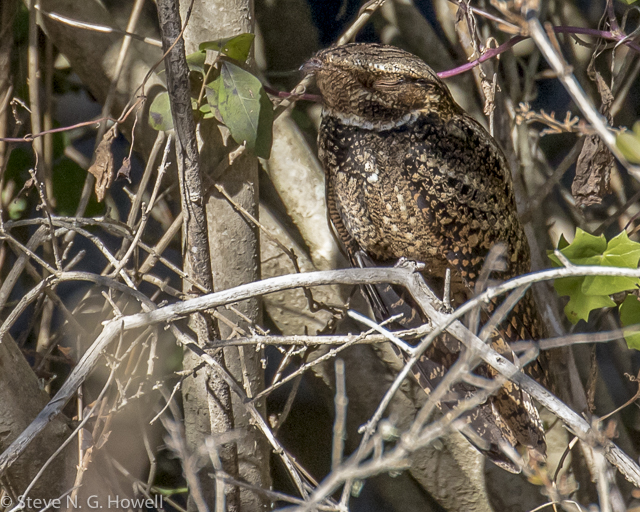
After sleeping in the sun, this one-day-wonder immature Chuck-will’s-widow yawned at dusk, preened its breast a little, and flew off, never to be seen again. Only the fourth California record, and two of the others were also in December–January, hinting at an interesting, but as-yet-unexplained, pattern.
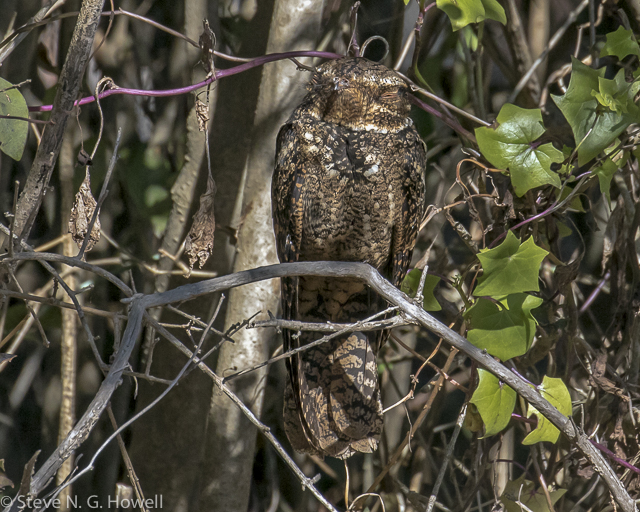
One more oddball at the year’s end was this handsome male hybrid wigeon, a “new bird” for the walking year, even though I’d seen both parent species. So, the Bigfoot Year ended at 230 species, plus one hybrid, plus one species not found myself.
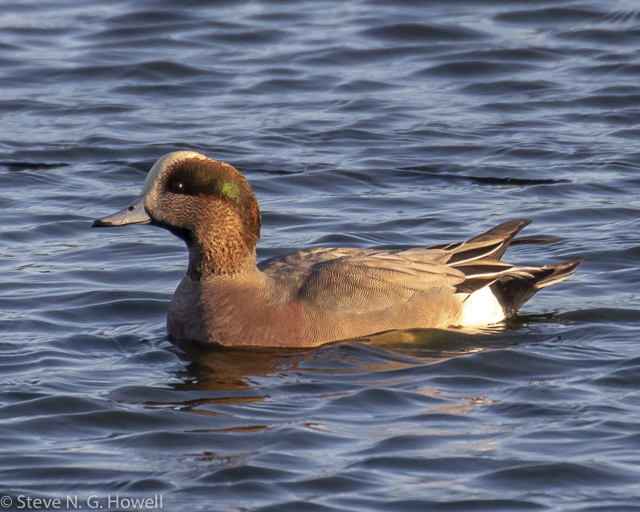
This sunlit Merlin on January 1st was a nice way to ring in the New Year, and let’s hope 2021 allows a little more travel. Wishing a Happy New Year to all WINGS participants, and I hope to see some of you in the field later this year? And now we sit back and wait...
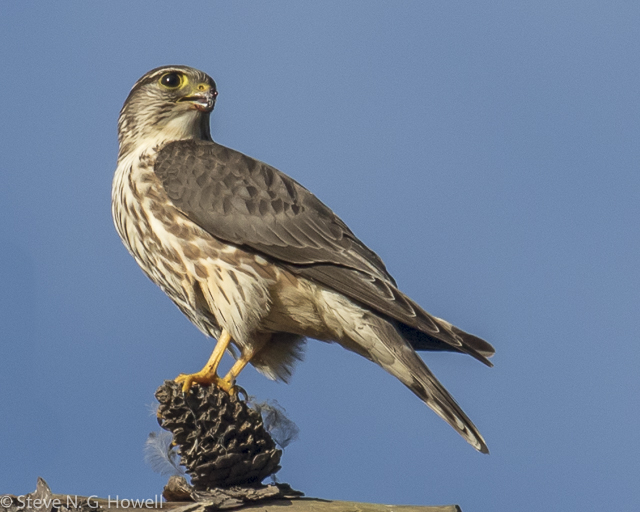
December 14:
Steve Howell continues his Big Foot Big Year into October and November
Steve Howell continues the saga of his COVID-enforced Bigfoot Year in Bolinas, California, with a summary of the record-breaking (oops, giveaway...) late fall months, October and November. Whether it was daily birding or simply that October was above average, I found a steady trickle of new species, including predictable Broad-winged Hawks in the first few days, this adult with a full crop,
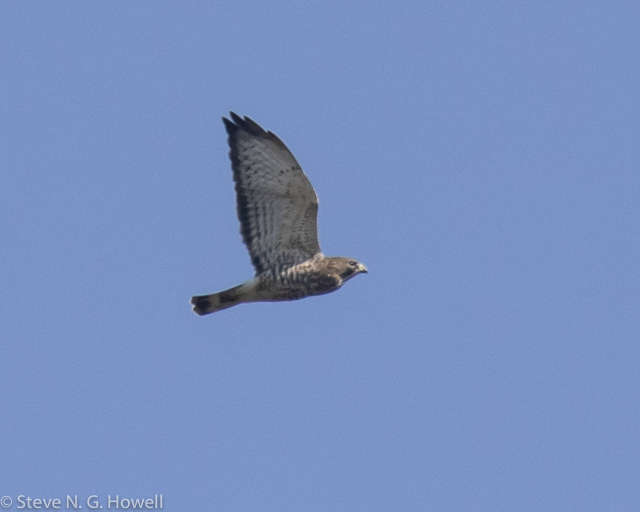
And an unpredictable Acorn Woodpecker (not annual in town, but breeds nearby), this immature male.
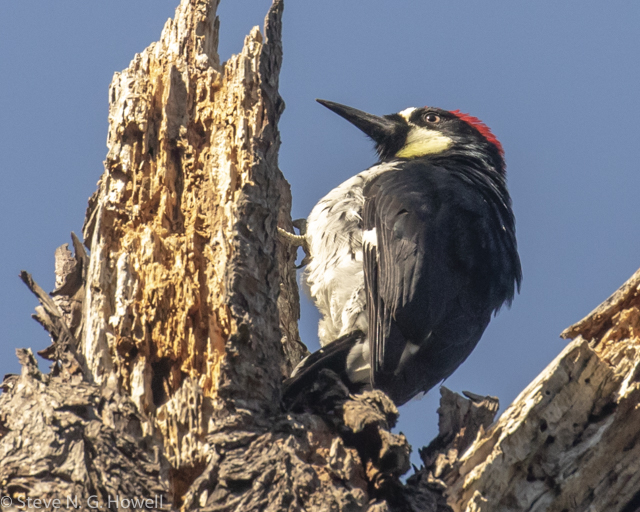
Vagrants included a couple of Tennessee Warblers, always a treat in bright fall plumage.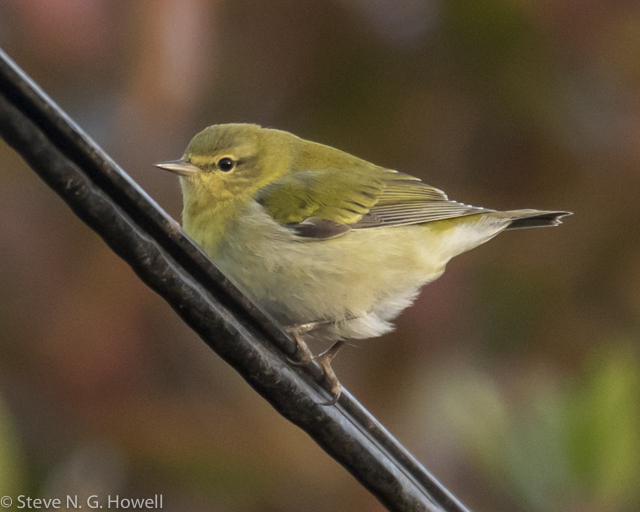
Plus the third Gray Catbird for my yard in 5 years, remarkably on the same date as the first bird (same bird?) back in 2016!
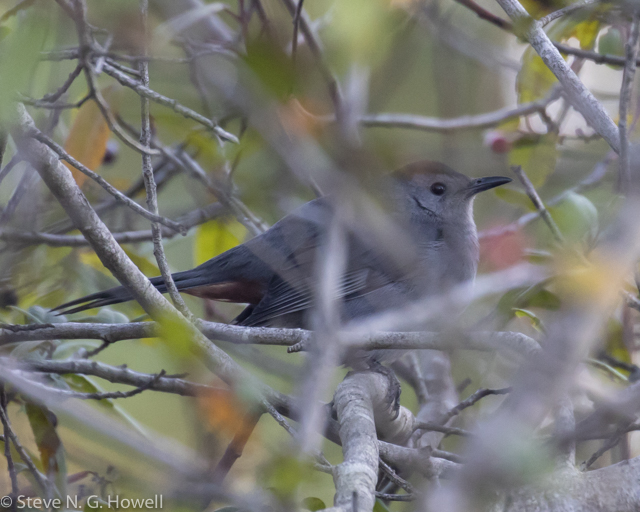
Flocks of Cackling Geese headed south in mid-month.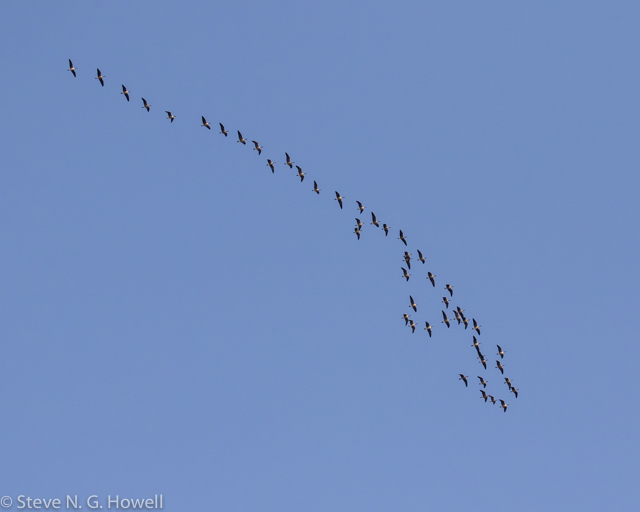
Other notables included another (!) Painted Bunting, even drabber than the September bird—what color exactly is that?
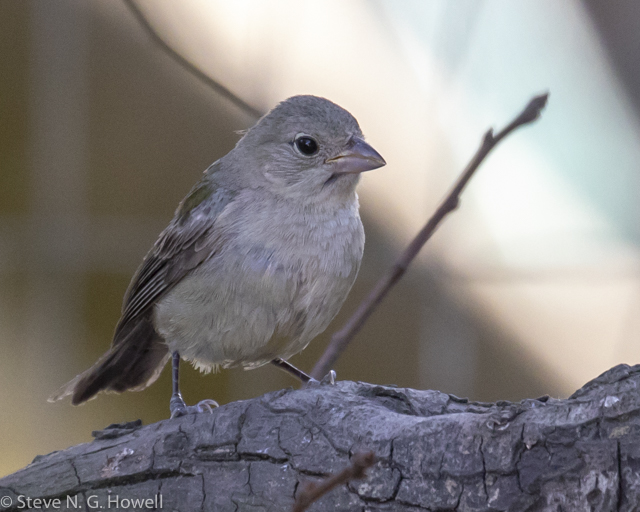
A distant fly-over White-faced Ibis (I’ll assume it wasn’t a Glossy!) was tie-maker for the 2018 total of 218 species, and the tie-breaker was this unexpected young female Vermilion Flycatcher bathed in sunset light at the sewage ponds, very much a county rarity! Gone the next day, sadly.
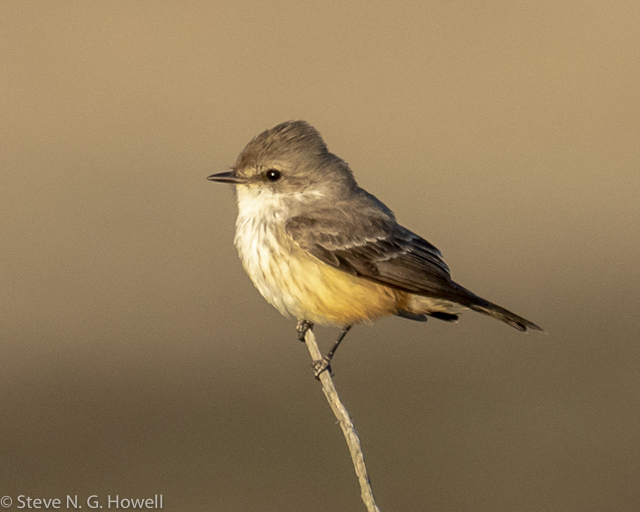
October 28th produced Horned Lark and Cassin’s Finch from my yard (both local rarities), plus this loudly calling (thanks, or I’d never have seen it!) Swamp Sparrow a few blocks away, making 222 for the year—the old record well and truly shattered.
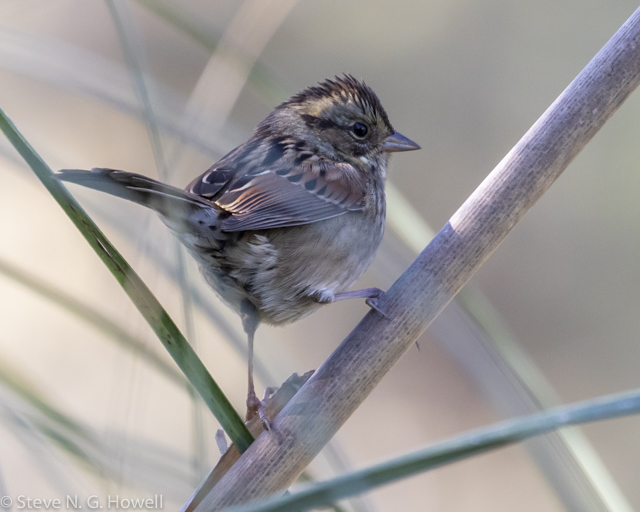
A few waterbirds in late month rounded out October at 225 species, and new birds inevitably dropped off in early November, although Varied Thrush finally (!) appeared, calling from a distant tree top one early morning.
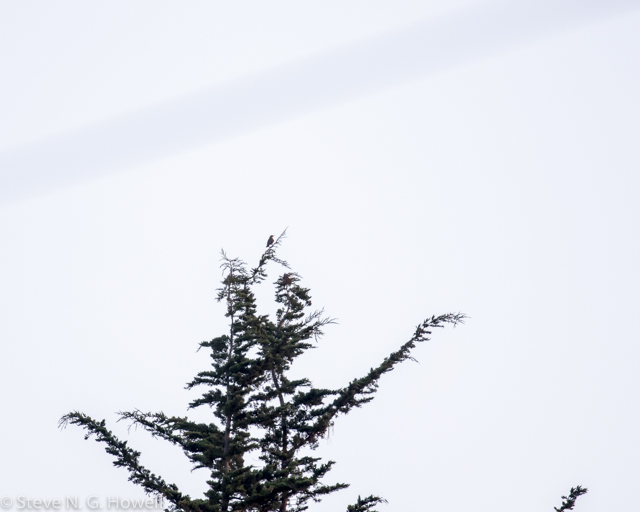
For those who say, “Oh it was too far away to get a (documentary) photo,” that’s rarely true—if you can see and ID it with your binoculars, then the camera usually does a better job—here’s the same Varied Thrush image cropped, not a cover photo, but certainly diagnostic. Try it some time.
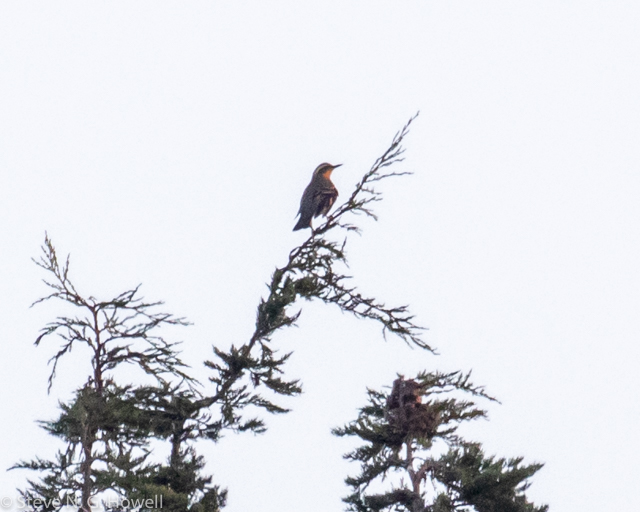
The “local” Black Vulture (a mega-rarity in California, but it’s been wandering the state for years) made an appearance one afternoon, number 227, and then a couple of Marbled Murrelets plus this vagrant Eastern Phoebe (here posing with a local Black Phoebe—look at the different wing and tail lengths) all on November 21st suddenly made 230 species go from unlikely to quite possible. What a difference a day makes!
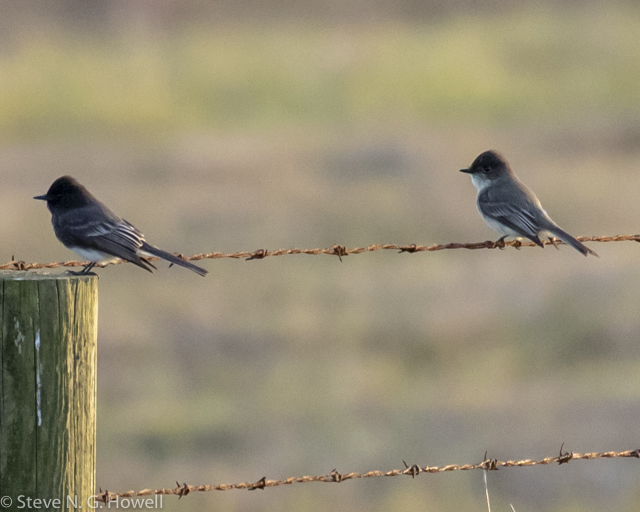
I spent the rest of the month appreciating the local common birds, such as sparrows and this stunning Steller’s Jay (imagine this as a rare vagrant, it would blow your socks off!), and then literally out of the blue a fly-over Evening Grosbeak on November 28th brought my 2020 Bigfoot Year total to 230 species. Hmm, could anything new appear in December, and if so, what? I am now basically out of expected and evenly vaguely possible species, but as we know, who knows with birding… Stay tuned for the final episode, coming soon.
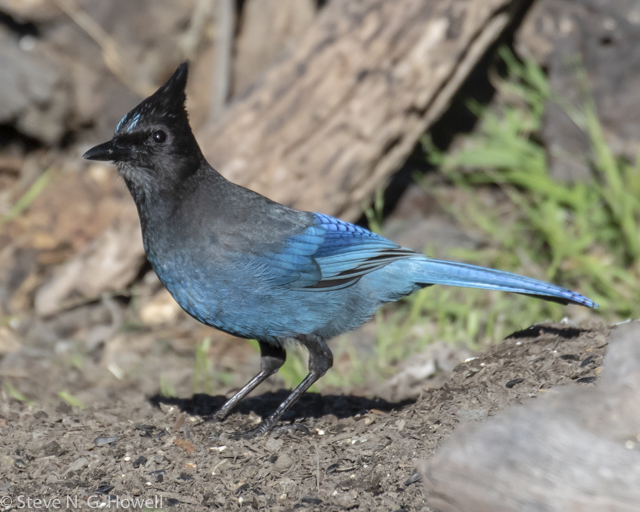
October 12:
Steve Howell continues his local by-foot Big Year into October
Steve Howell continues the saga of his COVID-enforced Bigfoot Year in his hometown of Bolinas, California, with a summary of the early fall months, August (or as the locals call it, Fogust—here my morning view “offshore”) and September.
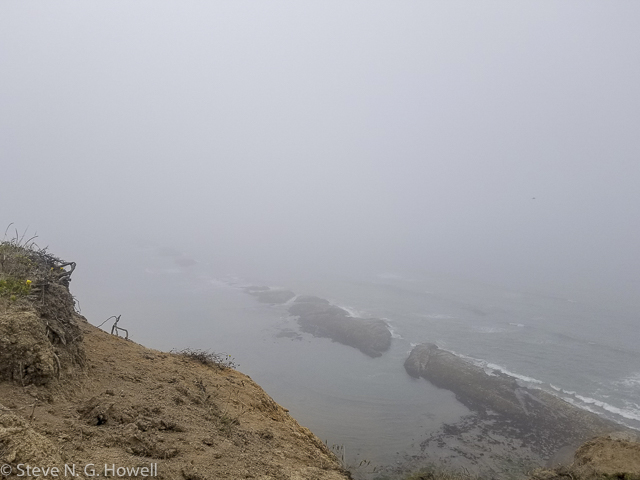
A steady ebb and flow of regular migrants included larger numbers than usual of Willow Flycatcher, like this young bird.
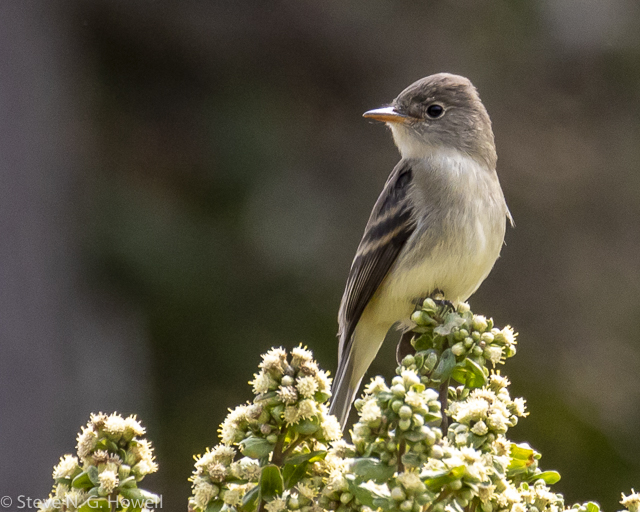
And scarce local migrants like this juvenile Semipalmated Sandpiper, with a Least Sandpiper in the foreground...
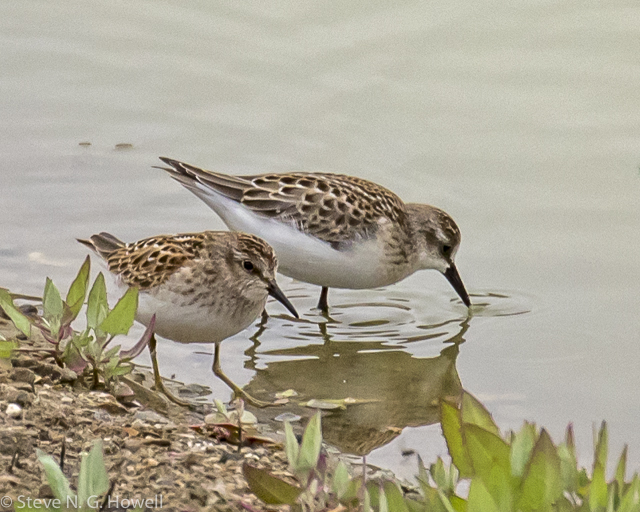
Plus my first Yellow-breasted Chat in town this century!
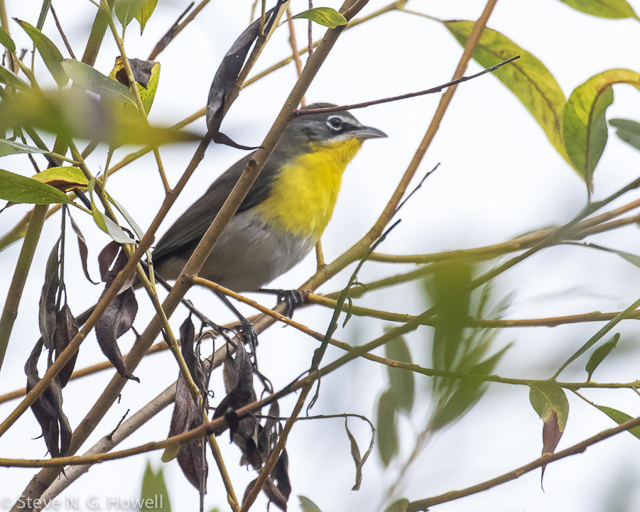
Local rarities included this Rock Wren (or Woodpile Wren?) in late August.
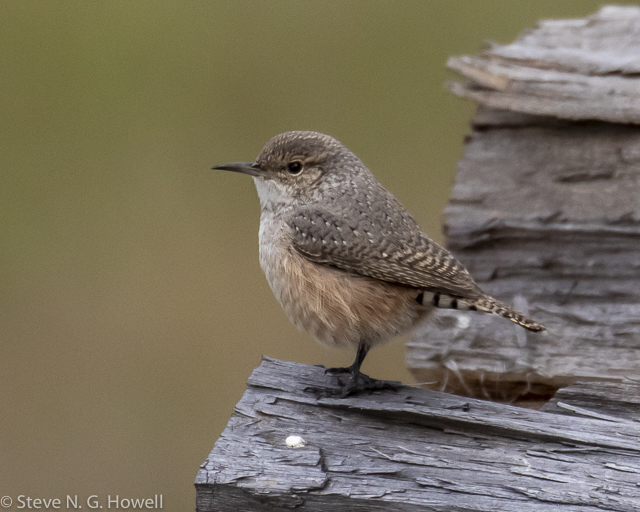
And this young Spotted Owl (note the downy feathers still on the neck), which showed up for a few days in early September, here with a decapitated Dusky-footed Woodrat; likely a fire refugee (the owl, not the woodrat ;-).
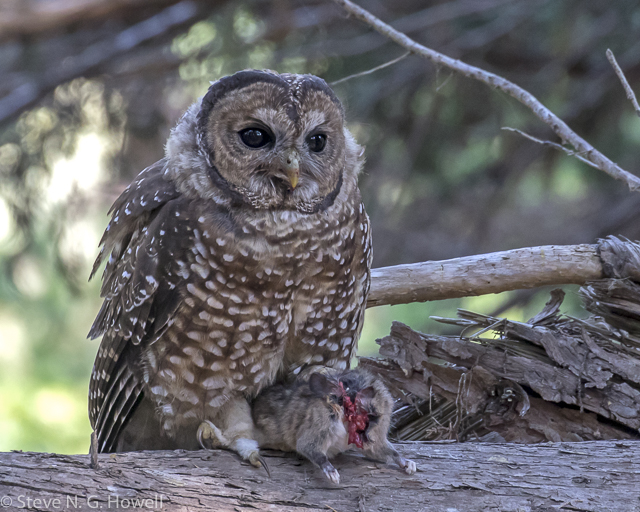
Fall 2020 had a bit of an orange theme, with an early season fire close by—here a shot of the local fire station on 18 August as I walked home from downtown!
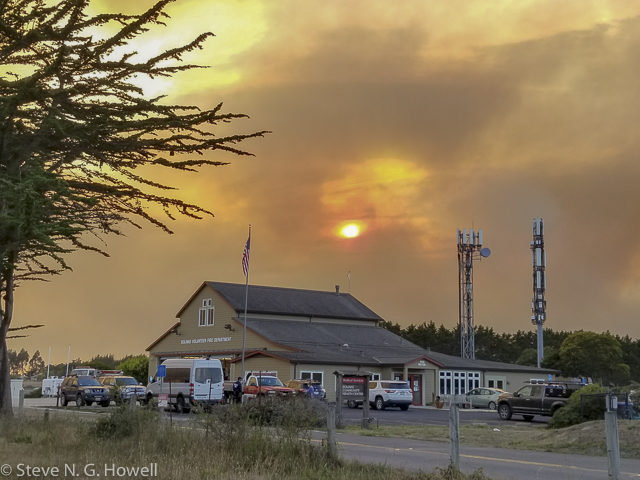
Some days though we had blue sky, with good numbers of low-flying Black Swifts (juvenile on left, adult male on right), perhaps migrant birds feeding at the edge of the burn?
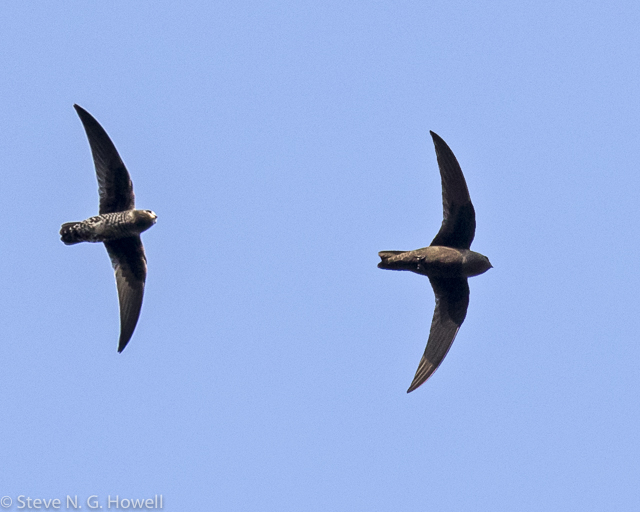
Other days not so much blue sky... This midday (!! really) sky on 9 September was too dark and gloomy to even try birding, plus going out and breathing the air was inadvisable.
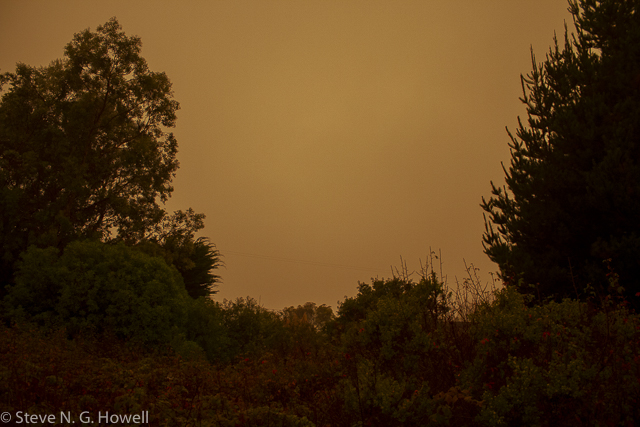
The days of golden light made for interesting photos, as with this Coyote in a nearby field.
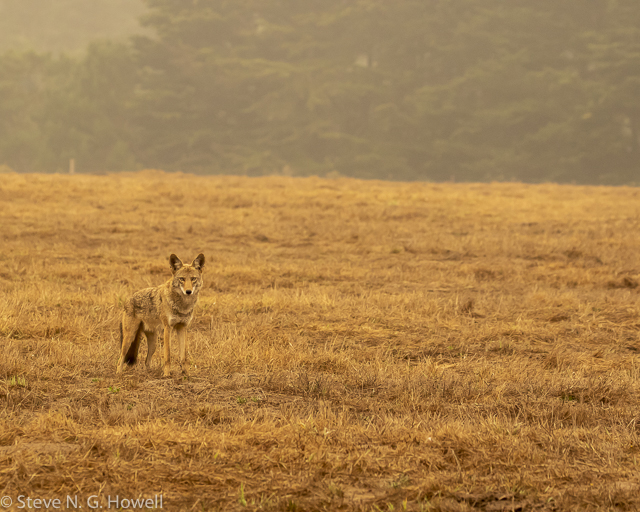
A nice sideline to the orange theme was this Gulf Fritillary in my yard, the first I’ve ever seen locally.
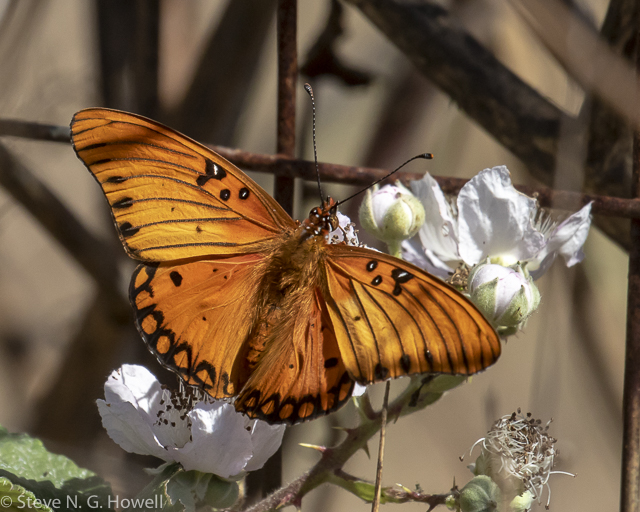
Birding on cleaner-air days turned up a few vagrants, including this Blackburnian Warbler (a record shot in the smoky gloom!), ....
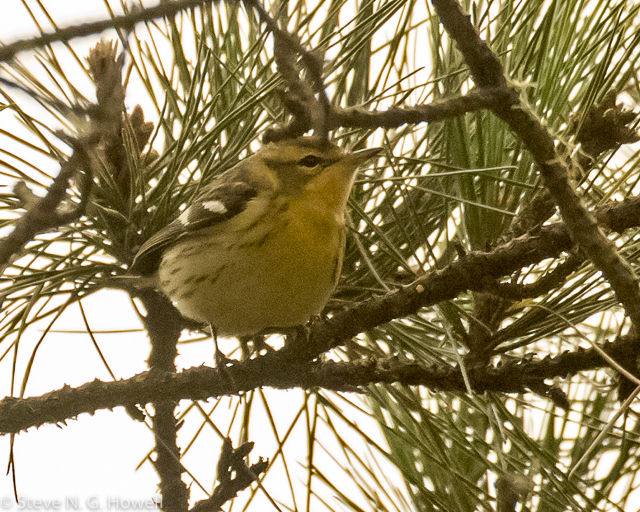
My first (long overdue) Northern Waterthrush in town, ...
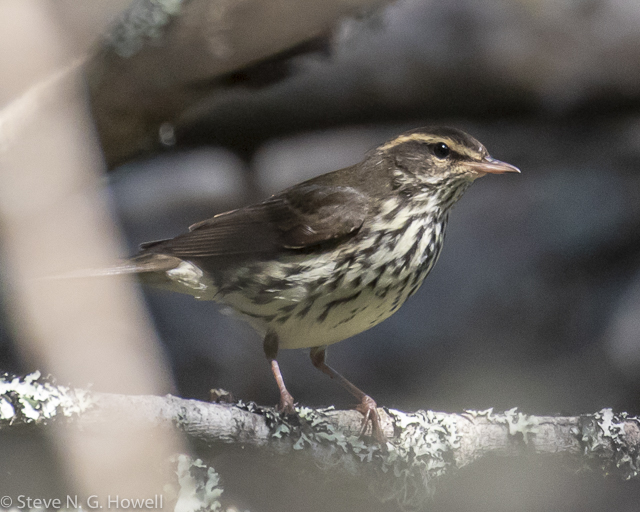
And a decidedly drab immature Painted Bunting, closing out September at 208 species. So, perhaps a chance to beat my Bigfoot Year record of 218 species in 2018, and already having smashed the 2019 total of 203 species. Roll on October... (and 2022 for that matter ;-).
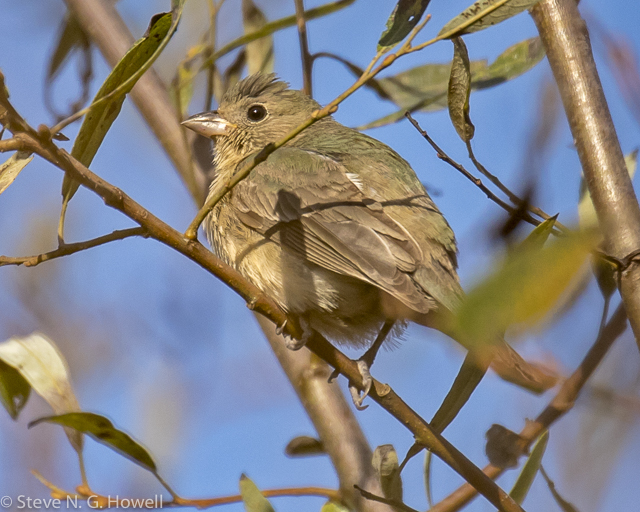
October 5:
Rich Hoyer on his recently-completed tour, Oregon in Late Summer
The Oregon in Late Summer tour was like a breath of fresh air. Well, at least the first half was, and then smoke from forest fires from all directions was evident most places we went, though we were lucky to be far from the fires' direct path. Not having led any tours since March, I was reminded what a joy it is to show off my home state and its birds to a group of passionate, appreciative, and grateful participants.
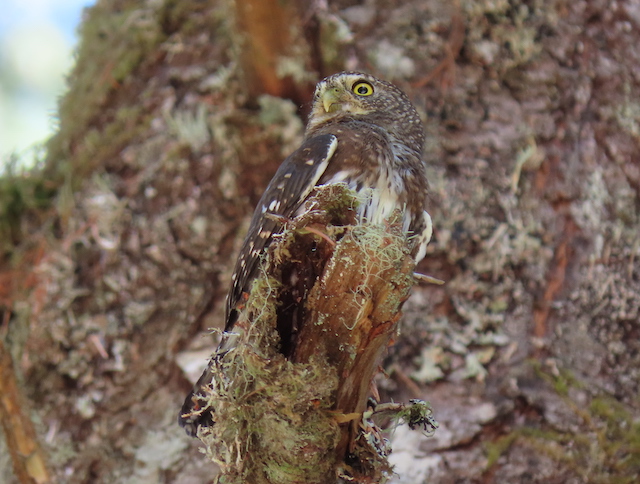
Near Corvallis, after our second of eleven picnic lunches in extraordinarily lovely settings, this Northern Pygmy-Owl descended from the towering Douglas-fir Canopy and put on quite a show for us.
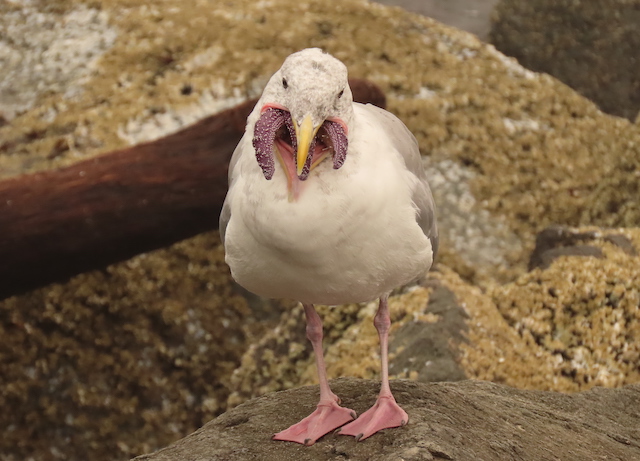
The coast was as birdy as ever – and fog we had one afternoon was the only variation from perfection during the entire tour. This Glaucous-winged Gull at Barview Jetty demonstrated the proper way to eat an Ocher Sea Star.

It was a shock to the senses when in a matter of hours we went from wet coniferous forest to the steppes of eastern Oregon, such as here at Fort Rock, the site where the oldest human footwear in the world, dated to as much as 11,000 years ago, were found.
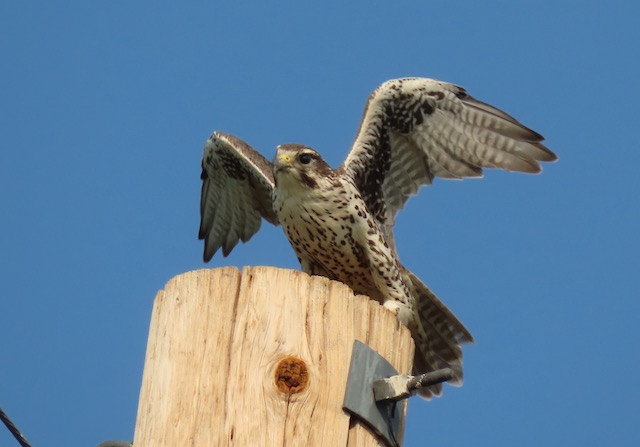
This is the habitat for the sleek and distinctive Prairie Falcon, and we were lucky to see three during the tour.
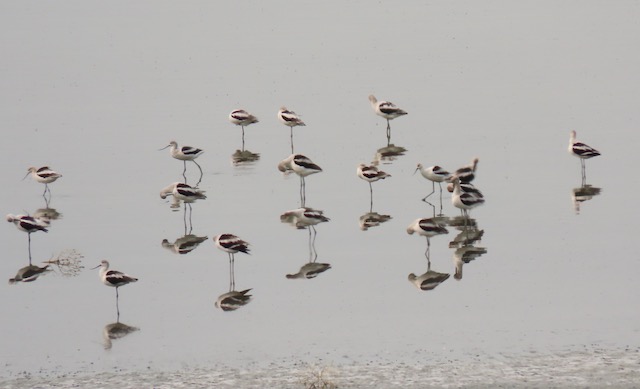
Thousands of American Avocets at Summer and Abert Lakes offered quite the spectacle.
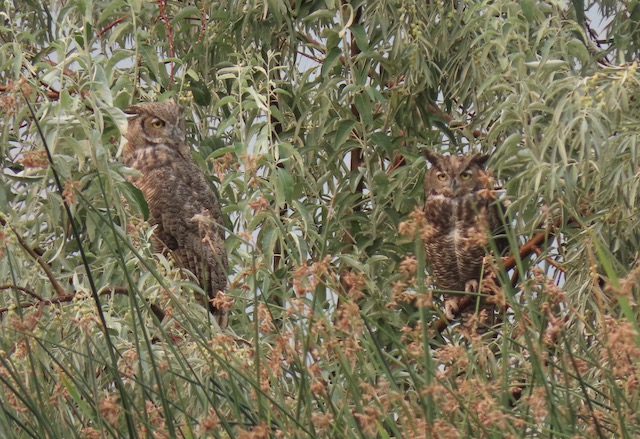
These Great Horned Owl shouldn’t have been all that happy to be disturbed from their day roost, but then why did they break out in full song?
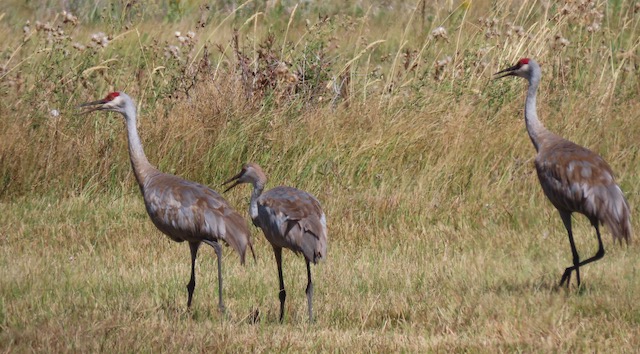
Two Sandhill Cranes and their colt calmy forage by the roadside at Malheur National Wildlife Refuge.
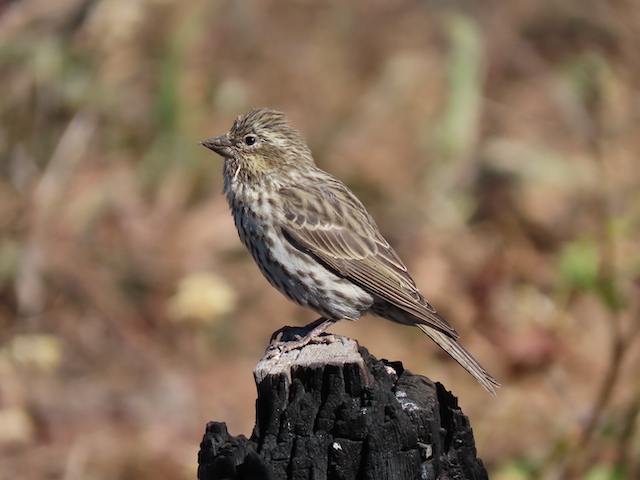
The drier and diverse coniferous forests of eastern Oregon’s Blue Mountains offered up many specialties such as Pinyon Jay, Clark’s Nutcracker, Mountain Bluebird, and this subtle immature Cassin's Finch.
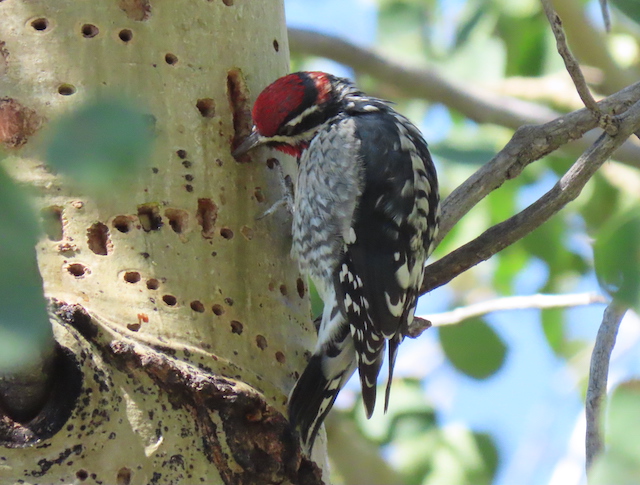
On the gaudy side, this Red-naped Sapsucker was busy at these Quaking Aspen wells on our glorious day on Steens Mountain.
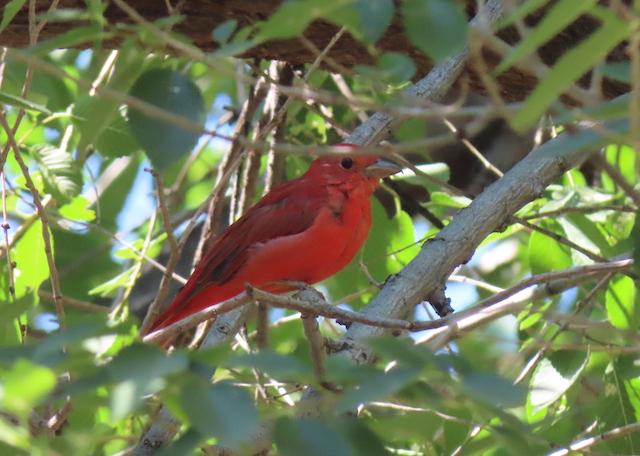
We varied the last day’s itinerary just a tad to visit a peach orchard on the John Day River in Kimberly, where this stunning male Summer Tanager, Oregon’s 28th record, had been found just ten days earlier.
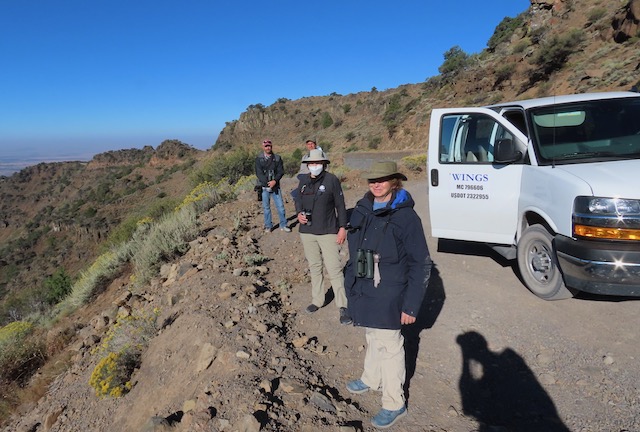
It was clear we were having a fabulous time every moment, and it was a sad moment when I realized we were nearing the end of tour so quickly.
October 4:
Steve Howell's recent participation in a Marin County, CA birdathon
With little else to do this fall, Steve Howell recently devoted some time to helping plan and execute a birdathon (trying to find as many bird species as possible in 24 hours, in Marin County, California) to raise funds for Point Blue Conservation Science (formerly Point Reyes Bird Observatory). He wove some local scouting into his last couple of weeks of birding and then, with team/pod member Catherine Hickey (a conservation director for Point Blue, whose idea it was, and who chose the name Kingpishers—Steve wanted the Kick-Ash-throated Flycatchers ;-), they took the plunge on 25/26 September. How did they do? Well, you can read about it on this link:
https://pointblue.securesweet.com//teampage.asp?fundid=870#.X3ZXD-17k2w
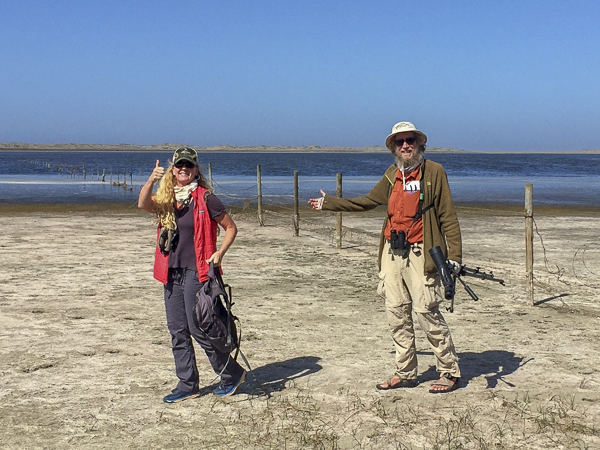
Steve was so exhausted afterwards that he even had to pass up on a local pelagic trip, which demonstrates how much hard work birding can be! He’s now recovered and the good news is it’s back to relaxed local birding, wandering around town and some local spots, where within 24 hours he found a Painted Bunting (they can be REALLY dull) …
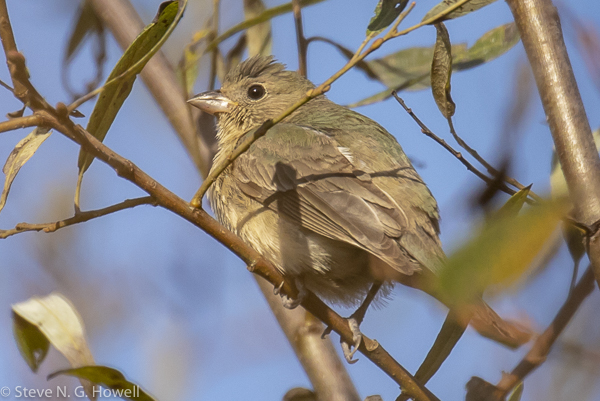
A migrating Burrowing Owl flying hundreds of feet up his yard in late morning!
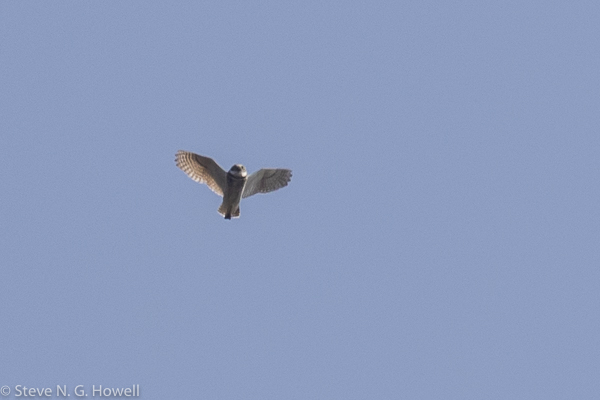
And a fly-y Bar-tailed Godwit (bottom right) with a flock of Marbled Godwits, thus probably using up Steve’s quota of luck for the fall!
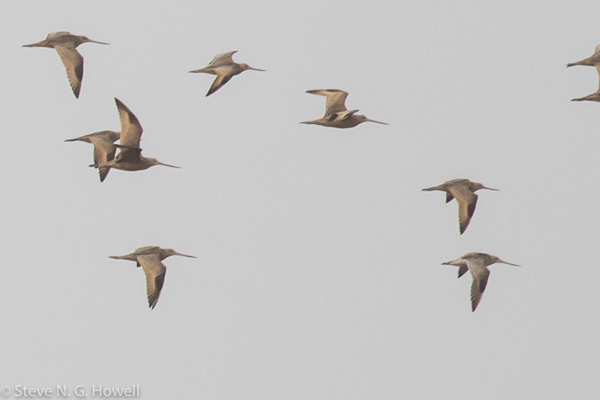
September 25:
Susan Myers shares her love of reptiles and amphibians
If you’ve travelled with me in the past, you are no doubt aware that after birds, my other passion is reptiles and amphibians. The art of searching for these amazing animals is known as herping and I’ve spent much of the last few months flipping rocks, road cruising and spotlighting as I herp around the US. When I’m leading in Asia, I’ll often stay a few days before or after a tour in order to go herping, and sometimes when time allows, I’ll take people out for some after-birding herping in some of the most reptile rich places on earth.
Right before we were hit with this pesky pandemic, I managed to squeeze in a week of herping in Goa, India where myself and two Indian herpetologist friends found King Cobras, pit vipers, endemic geckoes, and unique frogs.
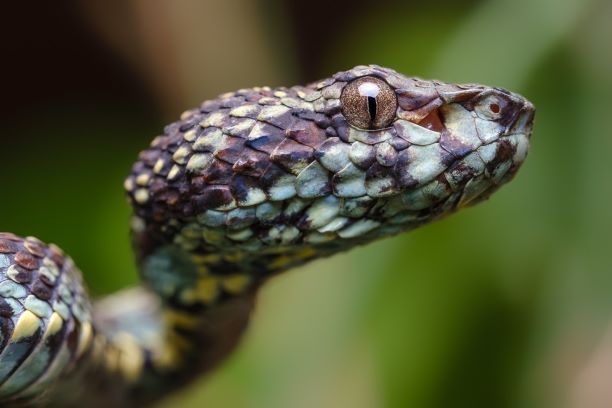
This stunning Malabar Pit Viper Trimeresurus malabaricus was definitely my favourite find.
And last year, I spent quite a bit of time herping in Borneo, where reptiles such as Paradise Gliding Snake and frogs such as Hole-in-the-head Frog beckon.
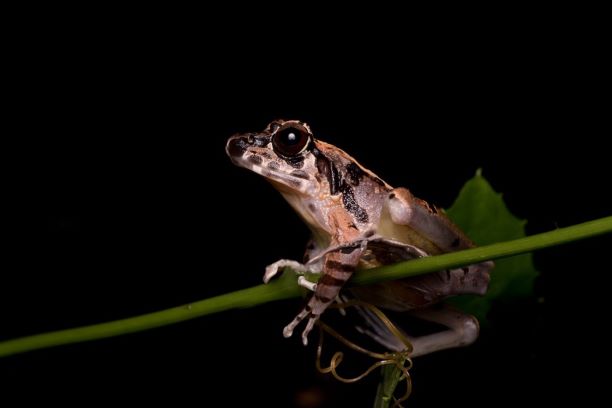
The Hole-in-the-head Frog Huia cavitympanum is the only non-mammal vertebrate to use ultrasonic communication!
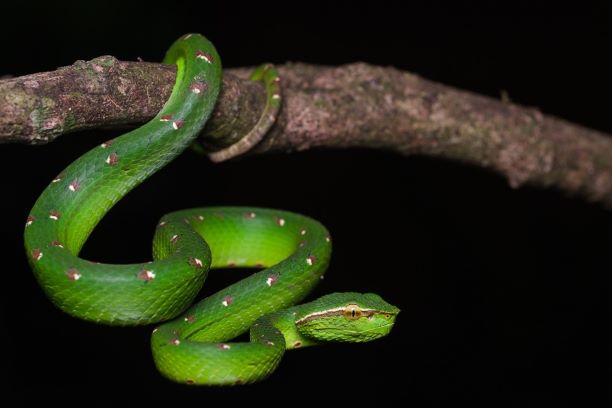
But without doubt my favourite Asian herps are the arboreal pit vipers. Just look at this stunning little male Bornean Keeled Pit Viper Tropidolaemus subannulatus.
Moving into the more recent past, I’ve had a lot of fun right here in the US searching for snakes, lizards, frogs and salamanders in various places over the last few months. Here are some of my favourites…
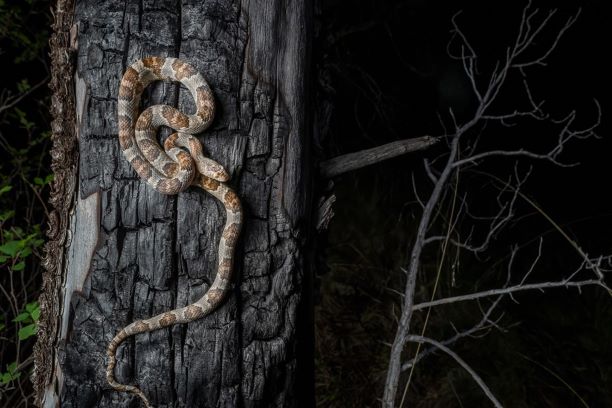
Sonoran Lyre Snake Trimorphodon lambda is found through in Mexico, Arizona and just into Southern California, Nevada and Utah. They are nocturnal and mostly terrestrial, but also good climbers as you can see! The name comes from the lyre-shaped pattern on the top of the head.
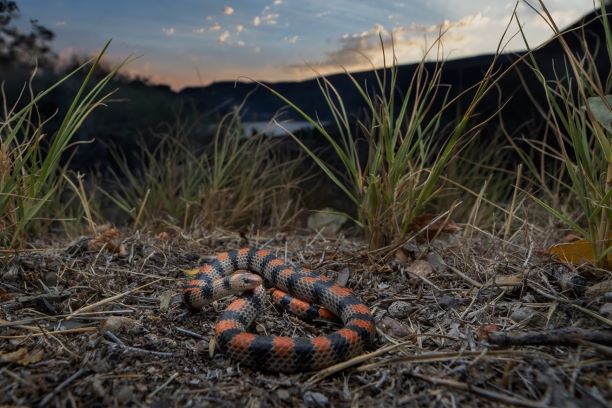
Ground Snake Sonora semiannulata
This gorgeous little snake is highly variable, but my friends and I got lucky and found the most attractive of them, the orange and black banded form.
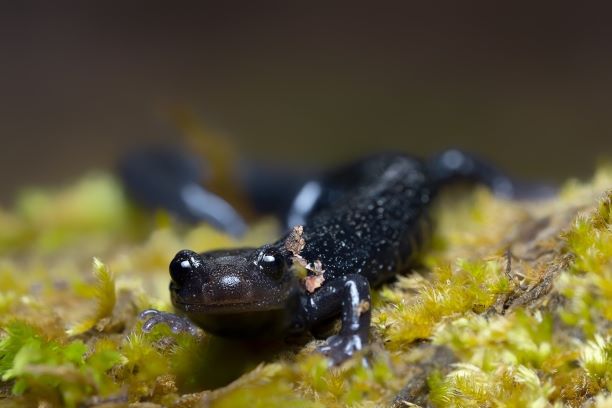
Shasta Black Salamander Aneides jecanus
We were told by local experts that we had no chance of finding this little fella, but I flipped a log and there they were! This very localised sally is one of the so-called lungless Plethodontid salamanders that do not breathe through lungs. They conduct respiration through their skin and the tissues lining their mouth. This requires them to live in damp environments on land and to move about on the ground only during times of high humidity.
But to me, the rattlesnakes are the pinnacle of American reptiles! They are beautiful, unique and, despite what you may think due to centuries of bad press, gentle and shy. I love photographing them…
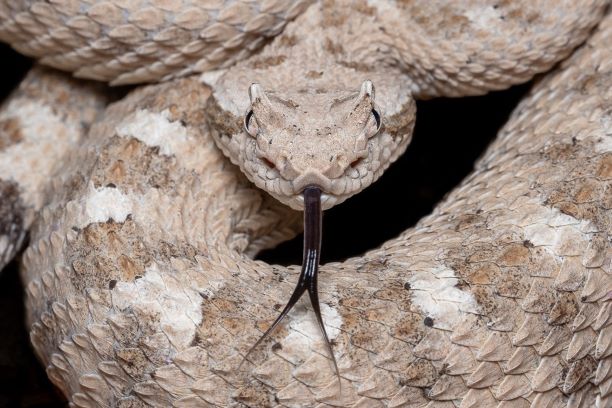
Sidewinder Crotalus cerastes
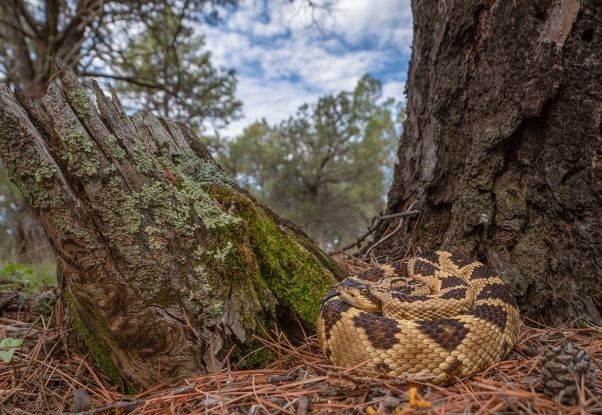
Black-tailed Rattlesnake Crotalus molussu
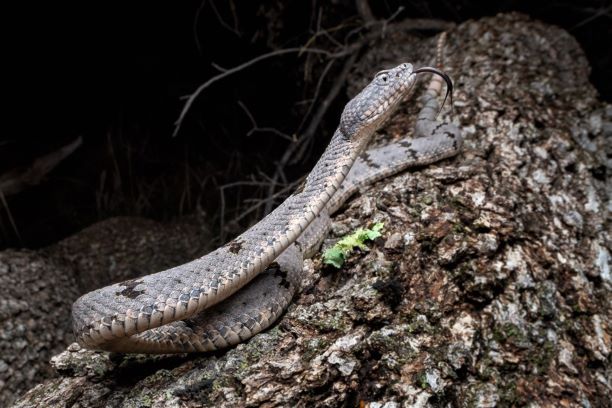
Rock Rattlesnake Crotalus Lepidus
Susan Myers Sept 2020
August 31:
Steve Howell reports on under-appreciated fall plumages.
It’s that time of year again...
Was the season named Fall for all the leaves that fall, or perhaps for all the feathers that fall during this season? Just think, without millions and trillions of feather-degrading bacteria we might be walking around be ankle-deep or locally knee-deep in ticklish feathers at this time of year!
A lot of our resident birds don’t look so pretty right now, like this Song Sparrow (or Antpitta?!) but molt is a critical part of their life cycle.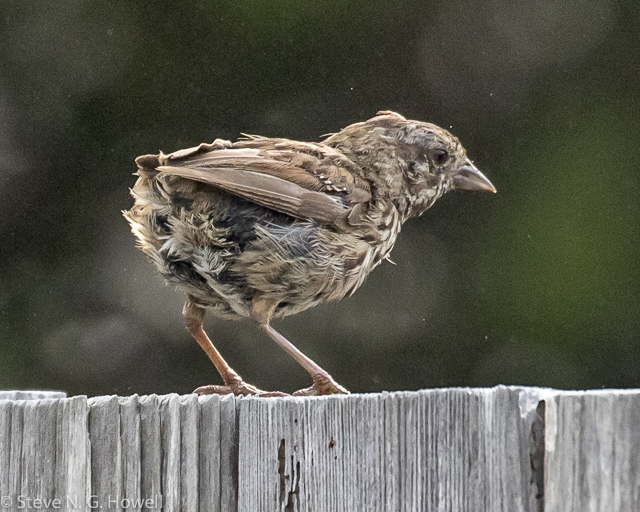
You don’t see too many photos of American Crows at the best of times, but even fewer when they look like this!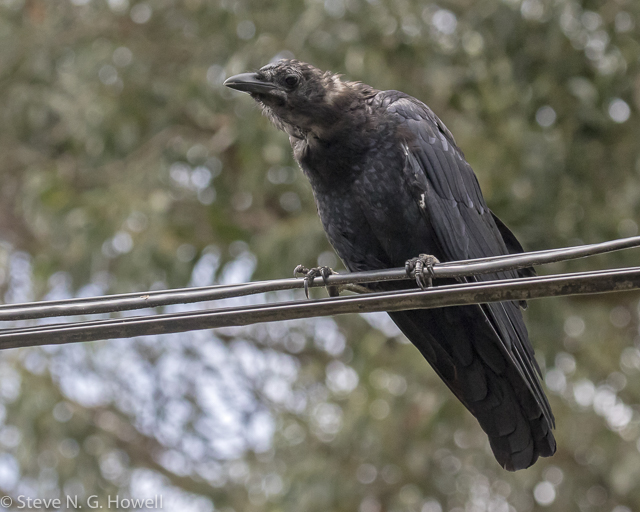
Even this fresh-looking Grasshopper Sparrow is molting—check out those bunched up growing secondaries, the last stage of its complete fall molt.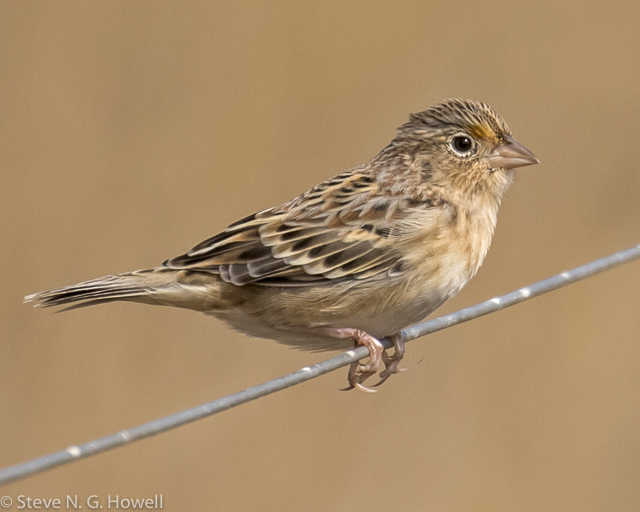
Wing molt is a more distinct on this American Robin...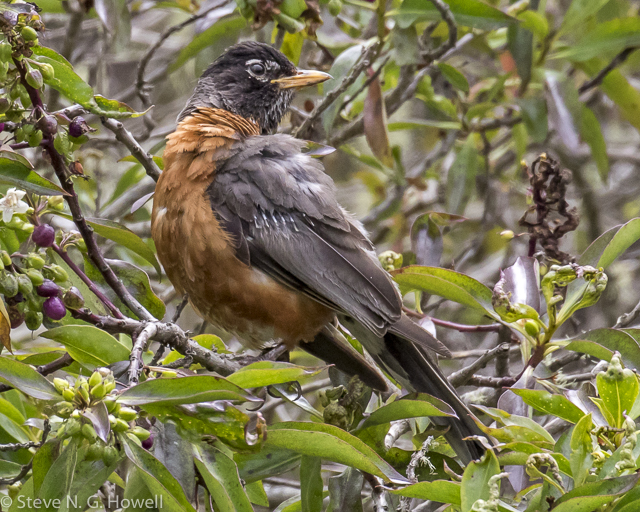
Even more so on this immature male Red-winged Blackbird...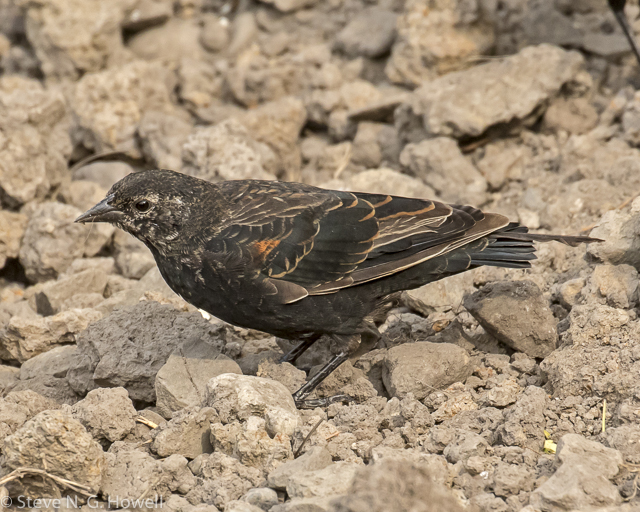
And this male Western Bluebird.
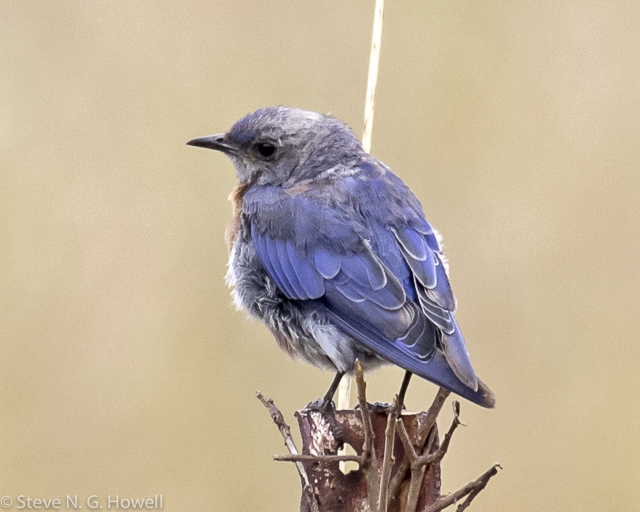
But just starting (those contrasting blacker feathers) on the wings of this young Violet-green Swallow.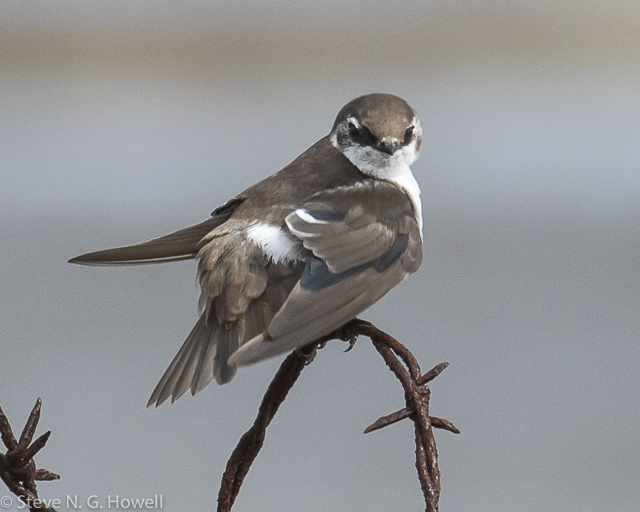
Some birds, on the other hand, are not molting, such as this juvenile Baird’s Sandpiper, ....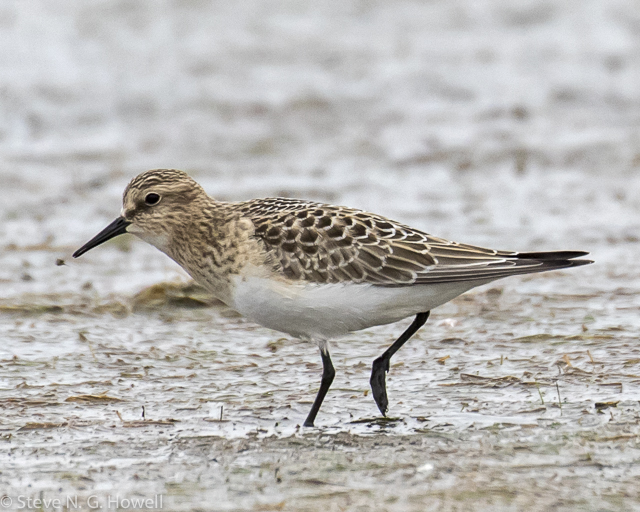
Or this juvenile Olive-sided Flycatcher.
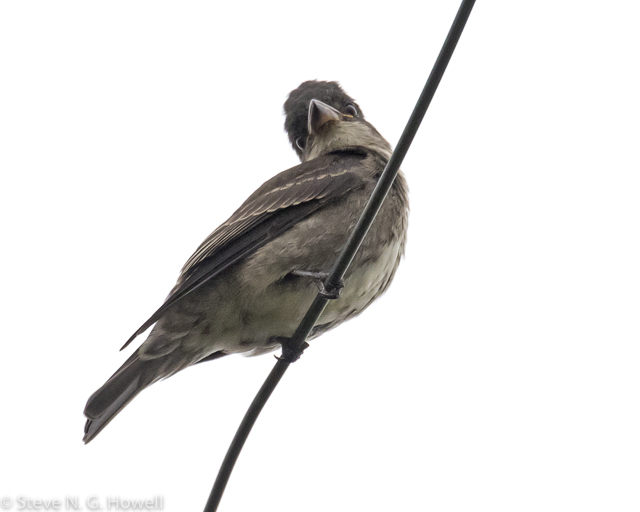
Or this stretching juvenile Purple Martin, who surely needs to exercise.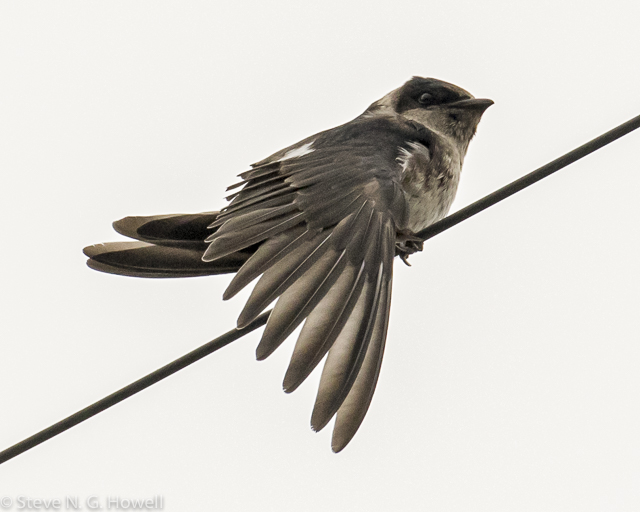
Because... these last three species are all long-distance migrants that grow a strong juvenile plumage and migrate off to as far away as Tierra del Fuego to undergo a mid-winter (= mid-summer down there) molt before they return here next spring with a completely new coat of feathers. So take a look around at the common birds, see which are molting and which aren’t, and take a moment to ponder their diverse and amazing lifestyles. And give thanks to countless unseen feather-degrading bacteria that we’re not all sneezing in a blizzard of feathers!
